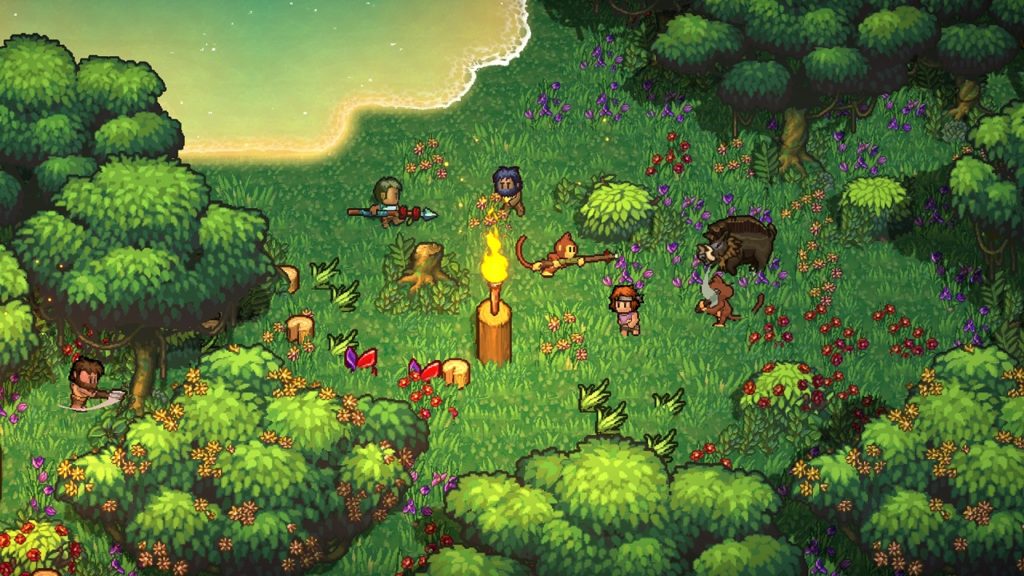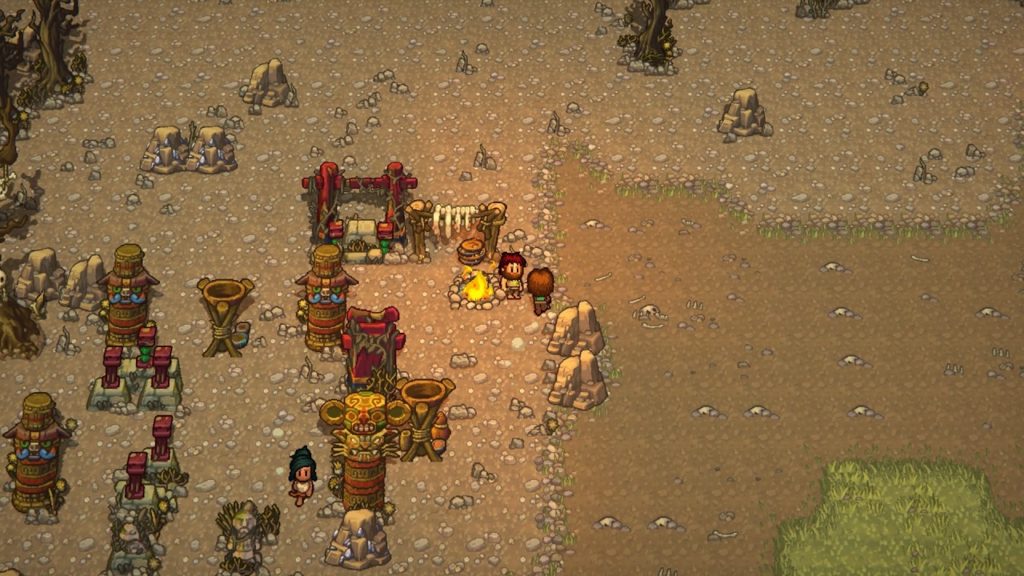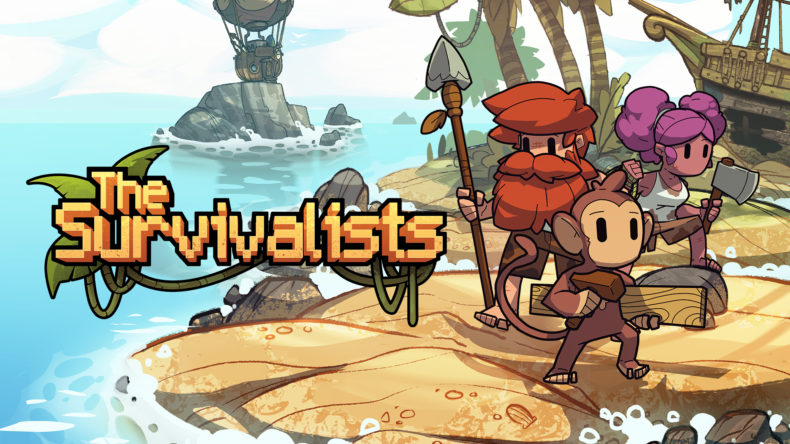October 9, 2020
Imagine being cast away and lost on a deserted island in the middle of nowhere. How would you survive? Would you quickly adapt to the surroundings, successfully crafting a structure and some basic tools? Perhaps you would stave off a growing sense of isolation and fear by talking to a volleyball you’ve painted a face on? Me? I would co-opt a group of indigenous monkeys to perform tasks I can’t be bothered to do myself so that I could find a way off this beautiful but dangerous island and back to civilisation, just like in The Survivalists.
There’s always been more than a hint of colonialism in survival games. The core conceit being that you are stranded in a strange foreign or alien world and must use your wits to survive. Plundering the surrounding area for its natural resources is de rigueur of course and The Survivalists is no different in this sense. You will need to chop down the trees for wood to build a variety of items, smash rocks, gather berries from nearby bushes to eat and indiscriminately slaughter all of the local fauna for food at materials. The Survivalists lets you go one step further though, by doing all of that and letting you exploit the local monkey population to perform the menial tasks you no longer have time for.

To combat the inevitable genre fatigue of endlessly gathering resources by chopping down trees, punching rocks and juggling your stocks between your storage crates, the team at Team 17 have provided you with a bunch of monkey pals that you can tame and exploit for their labour. First off you have to gain its trust, simply achieved by giving it some food. Once it is compliant you can highlight it with your cursor and place it into mimic mode so that it watches your actions. Then, whilst it is in that mode you perform the task you want it to take over doing. If done correctly the monkey will then copy that action over and over until you tell it to stop. You can teach them to gather resources, bring your items for crafting and even train them as a simian army to battle the various hostile inhabitants of the island. Honestly, it is quite a cool if somewhat fiddly mechanic, but there’s something a little uncomfortable about it that I haven’t experienced quite as acutely before in games of this genre. Throwing bananas at my legion of monkey helpers, or are they slaves? to attract their attention feels a little too on the nose at times.
Pushing some uncomfortable questions aside, The Survivalists has you washing up on the shore of a deserted island. The environment is procedurally generated, of course, and delightfully rendered in an isometric view. For those that have played The Escapists you will be more than familiar with the art-style as this is based within that universe. There is an issue though as the 2.5D nature of the environments more often than not hides obstacles to your movement. Tree branches, narrow passageways through cliffs and other hindrances to your movement are often hidden from view. So too are the resources that you gather. Chopping a tree down will give you a variety of items, each of which have to be picked up individually – if you have done this behind another tree in the world you may well struggle to see all the individual pieces. Furthermore your inventory space is woefully limited to the hot bar at the bottom of the screen, there is no way to expand it other than taming a monkey and having them carry a chest around like a mini Sherpa.

Crafting is a fairly straightforward process. You can craft a limited amount of items by hand, but others will require a workbench. Everything works on a blueprint basis and you unlock these through an upgrade trees based on nodes. The issue is that related crafting options only become available after you have crafted the one previous. It has the affect of making you feel like better options are hidden behind an item you don’t actually want or need at that present time. It won’t take long to top out the upgrade tree though, leaving you feeling like you have seen everything there is to offer in The Survivalists after a relatively short time. Still, being able to lay down the blueprints of your structures beforehand and then having your monkey butler bring you the resources to craft it does have some satisfaction to it.
Eventually, of course you will need to venture out and explore. There are temples and caves and other secrets dotted around with some light problem solving that your monkey army can assist you with. At times you will need to fight off the angry natives, but you also have the opportunity to trade and fish. My issue is that once you have built your base there isn’t a great deal more for you to do at present. Team 17 has recently issued a roadmap for future content, which includes things like agricultural farming, animal taming, weather systems and new biomes so there is scope for The Survivalists to grow, but there’s no escaping that it feels a little light on content at present.
There’s a fair bit of potential in The Survivalists. It is hampered a little with some fiddly controls and design choices that can restrict your movement, as well as some needless restrictions on the way resources are gathered and stored. I am uncomfortable at the sub-text of the monkey butlers, which are the biggest differentiator for this entry in to a crowded genre. It is an interesting mechanic no doubt, but I do wonder if it has removed some element of “survival” from the game in that you can automate a lot of what you would normally be spending your time doing, and at present there isn’t a lot else to keep you busy.
Nice visuals
Dungeons add a bit of variety
4 player co-op
Inventory management is consistently a pain
Combat is a bit awkward
Can't always see where you are going
Bit light on content at present
The Survivalists is the latest in a crowded genre. Bright visuals can't hide that it is a fairly light experience at present, but there is some enjoyment to be had if you can look past the slightly uncomfortable sub-text of its central mechanic.





